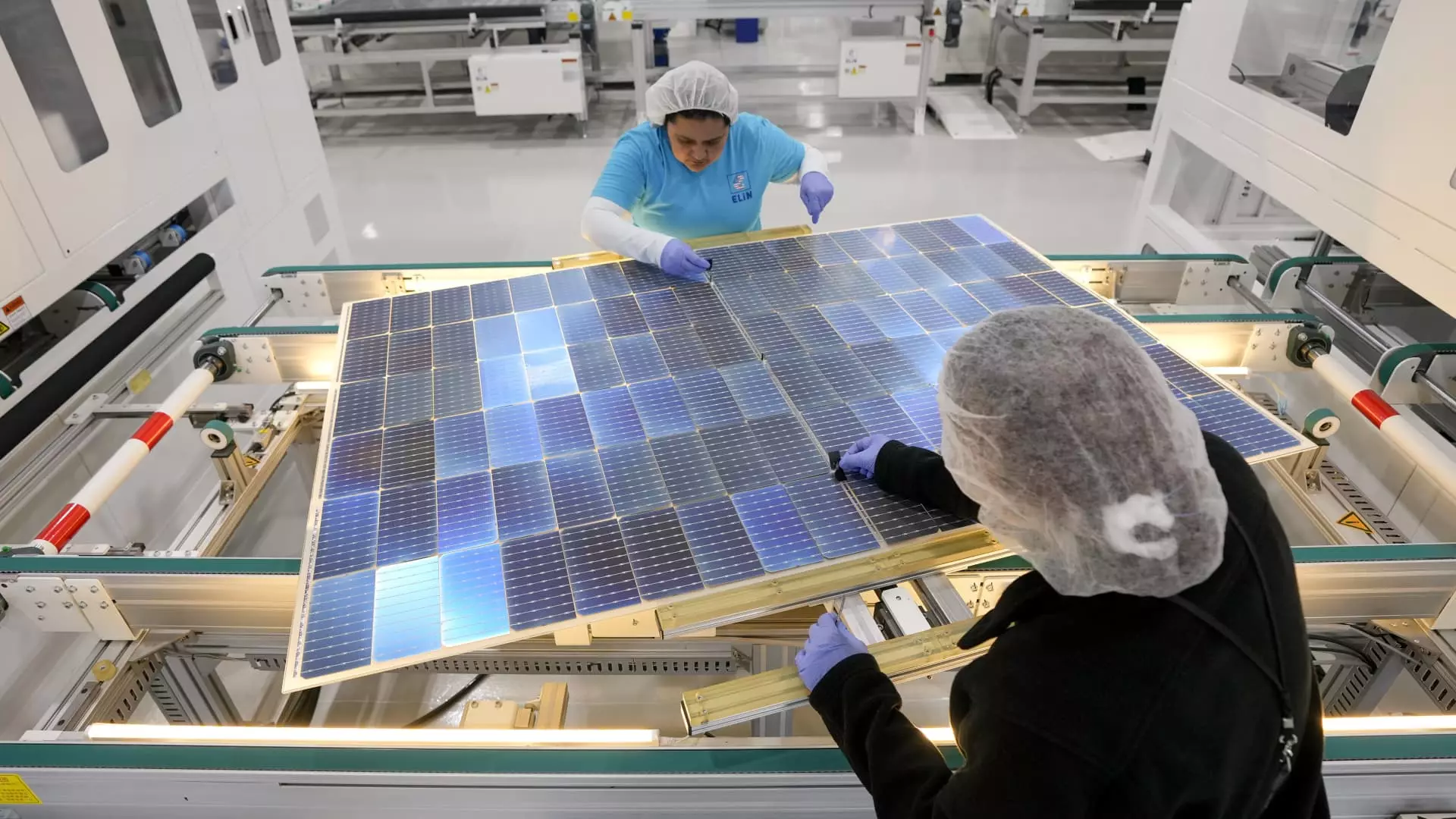The implementation of the Inflation Reduction Act has led to a significant manufacturing boom across the United States, with billions of dollars being invested, especially in rural communities in need of economic development. This influx of investment has the potential to transform these communities and bring about lasting change. However, the future of these investments hangs in the balance, largely dependent on the outcome of the upcoming U.S. presidential election.
Since President Joe Biden signed the IRA into law in August 2022, companies have announced a staggering $133 billion of investments in clean energy technology and electric vehicle manufacturing. This data, sourced from the Massachusetts Institute of Technology and the Rhodium Group, indicates a significant increase of 305% compared to the two years prior to the enactment of the IRA. The overall impact has leveraged half a trillion dollars of investment across manufacturing, energy, and retail sectors, showcasing the transformative effect of the IRA within the manufacturing industry.
An astounding 271 manufacturing projects for clean energy tech and electric vehicles have been announced post-IRA passage, promising to create over 100,000 jobs upon completion. This investment surge has been particularly beneficial for rural communities, offering a much-needed source of economic growth and prosperity. Unlike investments in other sectors which tend to concentrate in urban areas, clean energy investment has been a beacon of hope for rural communities across the country.
Renewable Energy Deployment and Growth
The deployment of renewable energy has received a significant boost from the IRA, with investments totaling $108 billion in utility-scale solar and battery storage projects. This surge in investment, particularly in solar and battery storage, indicates a promising trajectory for renewable energy within the country. Houser emphasizes the importance of these more mature technologies, such as wind and solar generation, stating that they have achieved “escape velocity” and are poised for continued growth.
Challenges and Uncertainties
Despite the significant progress made, the “manufacturing renaissance” is still in its nascent stages and is perceived to be fragile. The potential repeal or weakening of the IRA, especially in light of the looming U.S. presidential election, poses a threat to the sustainability of these investments. There are concerns that the gains made in clean energy and manufacturing could be undermined if the IRA is altered or dismantled.
Political Influence and Policy Environment
The political landscape, particularly leading up to the U.S. presidential election, has added a layer of uncertainty for investors and businesses operating in the clean energy sector. The contrasting viewpoints of the current and former administrations regarding energy policy, tax credits, and investment incentives have created a sense of apprehension among stakeholders. The potential rollback of the IRA and shift towards fossil fuel projects could disrupt the progress made in clean energy and manufacturing investments.
It is crucial for policymakers to consider the long-term implications of their decisions on the clean energy sector. The future of renewable energy growth, job creation, and economic development hinges on the preservation of crucial tax credits and incentives that have been instrumental in driving investment in clean energy technology and manufacturing. The political dynamics both at the national and congressional levels will play a significant role in shaping the trajectory of the clean energy industry in the years to come.
The Inflation Reduction Act has undeniably catalyzed a manufacturing boom and accelerated clean energy investments in the United States. However, the future sustainability of these investments is contingent upon legislative decisions, regulatory frameworks, and political will. It is essential for policymakers to prioritize the long-term benefits of clean energy growth and job creation while navigating the complex interplay of financial incentives, tax credits, and investment dynamics within the industry.

